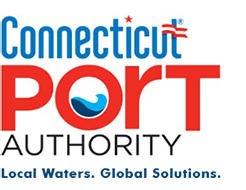The Day, January 14, 2023 7:46 pm
By Paul Whitescarver
A new American industry is about to launch from the Port of New London as all the talk about this area serving as a hub for the offshore wind industry becomes reality in a matter of months.
This Spring, barges with massive components for 12 offshore wind turbines will begin arriving at the Port of New London’s State Pier. The turbines will be largely assembled here before crews ship them to a point 35 miles east of Montauk, Long Island, – known as South Fork Wind farm — in late Summer and Autumn. By next Winter, South Fork is expected to be operational, supplying clean, sustainable energy to approximately 70,000 homes in East Hampton.
That process will be repeated over and over again. South Fork will be followed by Revolution Wind, 32 miles off our coast, and Sunrise Wind farm, 30 miles off Montauk. All three wind farms will be assembled and shipped from New London by the Ørsted and Eversource joint venture to power just over 1 million homes in New York, Connecticut, and Rhode Island.
In anticipation of this, seCTer (Southeastern Connecticut Enterprise Region) ended 2022 by presenting the nation’s premiere offshore wind energy workshop for businesses, educators, and policymakers — “Foundation 2 Blade.”
Produced by the Business Network for Offshore Wind, this three-day event served as a primer for those interested in becoming part of the industry’s supply chain.
The takeaways were overwhelming and encouraging.
Because offshore wind energy is new to America, we need to provide the manufacturing facilities, construction equipment, and workforce necessary to support it.
Finding enough workers will be a significant challenge. Connecticut, particularly this region, has workers who can pivot into offshore wind. But we know that General Dynamics Electric Boat, the nation’s submarine manufacturer, is having difficulty filling its own ranks. The demand for “Blue Tech” workers will only increase.
We need a fleet of vessels designed to transport equipment and workers to wind farms for installation, operations, and maintenance for decades to come.
We need to produce enough cable to connect turbines to one another, offshore substations, and the onshore power grid.
We need equipment and trained workers to install those cables and then monitor them to ensure they remain buried. As with our existing energy network, maintenance and yes, even repairs, will be necessary.
We need made-in-the-USA components for all of the turbines needed to meet the national commitment to generate 30 gigawatts of offshore wind energy by 2030. Europe and Great Britain have led the way for the past 20 years and have the facilities, engineers, and skilled workers to produce these components. China has ramped up quickly and has the potential to soon lead the world in installed offshore wind energy.
The advanced manufacturing and labor opportunities in the U.S. are enormous. A typical wind turbine blade facility employs more than 500 workers. The nacelle, which sits atop the monopile, is the brain of a wind turbine and converts wind energy into electricity for transfer to the grid. Thousands of precision parts will be needed, from nuts and bolts to high-tech components. While early projects will depend on European suppliers for these large components, the U.S. is ramping up its offshore wind industrial base.
New Jersey and Maryland are building monopile manufacturing plants scheduled to start production in 2024 and 2025, respectively.
But considerable opportunities for Connecticut businesses exist to produce sub-components as well as in shipbuilding and the assembly, shipping, operations, and maintenance of turbines — and all of the support services necessary for such work.
For example, secondary steel structures such as ladders, stairways, railings, and similar parts can be fabricated here. Lighting, safety items, personal protection equipment, electrical components – and lots of electricians — will be in demand along with administrative help, and support services. Undersea mapping and monitoring equipment such as that produced by Thayer Mahan in Groton, and training facilities such as Survival Systems in Groton are needed.
Our proximity to the Continental Shelf, our deep-water port, and the Connecticut Port Authority’s improvements to State Pier – with the support of private funding from Ørsted and Eversource — put our region at the forefront of this new American industry launching from southeastern Connecticut.
seCTer, the Chamber of Commerce of Eastern Connecticut, and the Naval & Maritime Consortium of Groton are leading the way regionally with our partners at the state level to ensure our businesses and workers are prepared for the vast opportunities presented by offshore wind energy.
Paul Whitescarver, Executive Director of seCTer, is a retired U.S. Navy Captain and former Commander of the Naval Submarine Base in Groton. seCTer is the federally designated economic development agency for this region.

